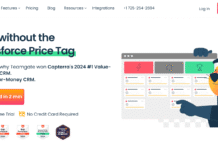Startup Cost Calculator: A Complete Guide to Estimating and Managing Your Business Expenses
Startup cost calculator is the first essential tool every entrepreneur should use before launching a business. Whether you are opening a coffee shop, creating an online store, or starting a tech startup, knowing your financial requirements in advance determines how strong your foundation will be.
Many entrepreneurs fail because they underestimate their expenses. They often focus on branding or product development while ignoring hidden costs like software subscriptions, licenses, or employee benefits. According to the U.S. Small Business Administration (SBA), poor financial planning is one of the leading reasons startups close within their first five years. This makes calculating startup costs not only an organizational step but also a survival strategy.
A startup cost calculator organizes your financial planning by breaking down your expenses into categories. These include fixed expenses such as rent, insurance, and legal permits, and variable costs such as marketing, inventory, and utilities. By listing them clearly, you can determine whether your savings are enough or if external funding is required.
Consider two entrepreneurs opening the same type of café. The first casually estimates costs, only accounting for rent and equipment. The second uses a detailed startup cost calculator that includes furniture, permits, legal fees, training, and three months of working capital. The difference? The second entrepreneur will not run out of cash mid-way and is far more appealing to investors and lenders.
Financial transparency also builds credibility. When you present a cost estimate to investors or banks, they expect a detailed breakdown. A startup cost calculator makes this easier by giving you structured, reliable numbers. It shows that you understand your business model, anticipate risks, and can manage resources effectively.
Even experienced entrepreneurs launching a new branch, product, or service need a startup cost calculator. Every market comes with unique expenses, and overlooking them can lead to serious financial strain. This tool minimizes guesswork and ensures every cost is accounted for.
In today’s digital world, cost structures have evolved. Businesses must now consider subscriptions for cloud services, remote work tools, and logistics for e-commerce. At the same time, technology provides affordable alternatives, such as digital marketing, which often delivers better ROI than traditional methods. A startup cost calculator balances these factors by giving you a complete financial picture.
In this guide, we will explore:
-
Why calculating startup costs is essential.
-
Different categories of expenses you must include.
-
The difference between fixed, variable, one-time, and recurring costs.
-
How to use a startup cost calculator effectively.
-
Industry-specific examples and real-life case studies.
By the end, you will have a clear roadmap for estimating your expenses, avoiding common mistakes, and preparing your business for sustainable growth.
Understanding the Importance of Startup Cost Calculation
When entrepreneurs imagine launching a business, the excitement of branding, product creation, or reaching the first customers often takes center stage. Yet behind every successful business lies careful financial planning. Startup cost calculation is not just a number-crunching exercise; it is a critical foundation that shapes strategy, funding, and long-term sustainability. Without a clear picture of expenses, even the best ideas risk running out of resources before they gain traction.
Financial Clarity and Risk Reduction
One of the greatest advantages of using a startup cost calculator is gaining financial clarity. When costs are identified and organized, entrepreneurs can predict how much money is required before the business becomes profitable. This transparency reduces risks because it highlights potential gaps between available capital and actual needs. For example, if an entrepreneur estimates $30,000 for opening a restaurant but the calculator reveals expenses closer to $50,000, they can address the shortfall before launching. Without this foresight, the business may collapse under unanticipated bills.
A startup cost calculator also minimizes emotional decision-making. Instead of relying on optimism or assumptions, founders work with structured data. Numbers reveal whether an idea is realistic within current financial limits or whether adjustments are necessary. This helps avoid premature commitments, such as signing a lease or hiring staff without a full understanding of long-term affordability.
Building Investor and Lender Confidence
Investors and lenders rarely fund businesses based on passion alone. They expect comprehensive financial projections supported by credible data. A well-prepared startup cost calculation acts as proof that an entrepreneur understands their market, industry, and operational requirements. It sends the message that the founder has researched every aspect of the venture, from licensing to initial marketing, and is prepared for realistic challenges.
Banks, angel investors, and venture capitalists often request detailed cost breakdowns during pitch sessions. Presenting clear estimates demonstrates professionalism and lowers the perceived risk of investing. When investors see structured calculations, they are more likely to trust that the entrepreneur can manage funds responsibly. For lenders, this transparency increases the chances of loan approval, since it shows the borrower can anticipate repayment schedules based on accurate expense planning.
Strategic Decision-Making and Prioritization
Another key benefit of calculating startup costs is that it helps entrepreneurs prioritize spending. Not every expense carries equal weight during the early stages of a business. By organizing costs into categories, founders can identify which items are essential for launching and which can be postponed.
For instance, an online store may prioritize website development, hosting, and product inventory while delaying advanced branding or premium office space. Similarly, a consultancy may invest in certifications and professional software first, while keeping marketing modest until revenue begins to flow. The startup cost calculator provides a clear hierarchy of needs, helping entrepreneurs allocate funds where they matter most.
This prioritization also creates flexibility. If capital is limited, business owners can adapt by adjusting timelines, seeking more affordable alternatives, or phasing in optional expenses later. Without a structured approach, spending may become random, leading to wasted funds on non-essential items while critical costs remain uncovered.
Long-Term Planning and Sustainability
Startup cost calculation is not only about the launch phase. It is also a blueprint for long-term sustainability. By including recurring expenses such as payroll, software subscriptions, and utilities, entrepreneurs can estimate how much working capital is needed to survive the first several months. This forward-looking perspective ensures that businesses are not only ready to open but also prepared to operate until steady revenue arrives.
Additionally, these calculations support the creation of cash flow projections. Entrepreneurs can predict when expenses will exceed income and prepare strategies to bridge the gap, whether through loans, investor funding, or personal reserves. For example, a tech startup may forecast that product development will take six months before any sales occur. Knowing this in advance allows founders to secure funding to cover that critical period rather than scrambling for emergency solutions later.
A startup cost calculator also enables entrepreneurs to test different scenarios. What if sales take longer to grow than expected? What if rent increases or suppliers raise prices? By modeling these situations, businesses develop resilience and contingency plans. This foresight often makes the difference between failure and survival during uncertain times.
Competitive Advantage Through Preparation
Startups operate in highly competitive environments. Those that prepare thoroughly often outperform rivals who rely on enthusiasm rather than structured planning. Entrepreneurs who calculate startup costs gain an advantage by being ready for financial challenges that others overlook. This preparedness leads to fewer disruptions, stronger investor relationships, and smoother scaling.
Moreover, businesses that understand their financial requirements can set realistic pricing strategies. They know exactly how much it costs to produce a product or deliver a service and can price accordingly to cover expenses and earn profits. Without accurate calculations, underpricing is common, leading to unsustainable operations. Overpricing, on the other hand, risks alienating customers. A startup cost calculator ensures balance by aligning expenses with market realities.
Case Example: Preparedness in Action
Consider a small bakery planning to open in a busy neighborhood. The founder initially estimates $40,000 as the required budget. However, after using a startup cost calculator, the figure increases to $65,000. The additional $25,000 accounts for health permits, insurance, marketing, initial payroll, and a three-month reserve for rent and utilities. Armed with this information, the founder seeks additional financing before opening. As a result, the bakery operates smoothly during the early months, building a loyal customer base without facing immediate financial stress.
In contrast, many small businesses skip this step and struggle within weeks, forced to cut corners on quality or close prematurely. This example shows why cost calculation is more than financial accounting; it is an essential part of entrepreneurial strategy.
Categories of Startup Expenses
Every business, regardless of size or industry, faces a diverse set of expenses during the startup phase. These costs can be overwhelming at first glance, but organizing them into clear categories makes the process manageable and transparent. A startup cost calculator becomes effective when expenses are grouped logically, allowing entrepreneurs to see where the largest portions of their capital will be directed. Understanding these categories is essential for building accurate financial projections and avoiding overlooked costs.
Administrative and Legal Expenses
Administrative and legal expenses are among the first costs new businesses encounter. These include fees for business registration, incorporation, and professional legal advice. Entrepreneurs often underestimate the complexity of setting up a compliant business structure. Filing documents for licenses, permits, and industry certifications not only requires time but also adds recurring administrative costs.
Lawyers may be needed to draft contracts, protect intellectual property, or ensure compliance with labor laws. In some industries, regulatory approvals add significant upfront costs. While these expenses may not directly generate revenue, they are crucial for building a secure foundation. Skipping or underfunding administrative and legal requirements can expose a business to lawsuits, fines, or closure.
Another administrative category includes accounting services and bookkeeping software. Early financial organization pays dividends later, as accurate records are essential for tax filings, investor reporting, and scaling. Even small startups should budget for professional guidance, because mistakes in legal or financial compliance can be far more expensive than preventative planning.
Facilities and Infrastructure
Most businesses require a physical or digital space to operate. Facilities and infrastructure costs include rent for office or retail locations, renovation or remodeling, and utility deposits. Depending on the business type, infrastructure might also include furniture, computers, and equipment necessary for daily operations.
For example, a retail clothing store needs fitting rooms, racks, and point-of-sale systems, while a tech startup may need a collaborative office space with reliable internet and networking equipment. Even businesses that operate remotely must consider digital infrastructure, such as cloud storage, cybersecurity systems, and virtual collaboration tools.
Facility-related costs also include insurance and maintenance. Many entrepreneurs forget to account for security deposits, property improvements, or accessibility modifications. These one-time expenses can significantly affect initial budgets. Including them in the startup cost calculator ensures that businesses are not caught unprepared when signing leases or purchasing property.
Equipment and Technology
Another major category of startup expenses is equipment and technology. Depending on the industry, this could range from heavy machinery for manufacturing to laptops and specialized software for digital businesses. Entrepreneurs often find that equipment is one of the largest upfront costs, and failing to plan for it can derail operations before they begin.
For service-based businesses, technology may involve subscriptions for project management, customer relationship management (CRM) platforms, or accounting tools. For restaurants or retail stores, it includes cooking appliances, refrigeration, and checkout systems. In many cases, technology evolves quickly, meaning that replacements or upgrades will become recurring costs over time.
A startup cost calculator helps distinguish between must-have equipment at launch and optional items that can be added later. For instance, a small café might delay investing in advanced espresso machines until revenue justifies the purchase. Prioritizing essential equipment ensures that businesses remain functional without overextending resources.
Inventory and Supply Costs
Businesses that sell products must account for inventory and supply costs. This category includes raw materials, wholesale purchases, packaging, and shipping materials. For e-commerce businesses, supply costs extend to warehouse storage or fulfillment center fees. Entrepreneurs must carefully balance inventory investment, since overstocking ties up capital while understocking limits sales.
A startup cost calculator can model different inventory scenarios, helping businesses prepare for seasonal demand or promotional campaigns. For example, an online store launching in November may need to increase inventory for holiday sales, while a landscaping business might prepare for peak summer demand.
Supplies are not limited to products for sale. Office supplies, maintenance tools, and consumables such as cleaning products also fall into this category. These may seem minor individually, but they accumulate into significant costs over time. By accounting for them early, entrepreneurs avoid underestimating operational needs.
Marketing and Advertising
Attracting customers is impossible without marketing and advertising. This category includes expenses for branding, website development, digital advertising, and promotional materials. For startups, effective marketing often determines how quickly a business gains traction in its market.
Marketing expenses can be divided into initial setup and ongoing campaigns. Initial costs include logo design, business cards, and the creation of a professional website. Ongoing campaigns may involve social media ads, pay-per-click advertising, search engine optimization, and influencer collaborations. Traditional businesses may also invest in signage, flyers, and print advertising.
The challenge for entrepreneurs is balancing cost with impact. A startup cost calculator helps plan realistic marketing budgets without overspending. Many startups fail because they either invest too little in marketing or allocate funds inefficiently. Prioritizing channels that reach the target audience most effectively is critical for achieving sustainable growth.
Human Resources and Staffing
People are at the heart of every business, and staffing costs represent a significant portion of startup expenses. These include salaries, wages, benefits, and training programs. Even solo entrepreneurs must account for outsourced services, such as freelance designers, developers, or virtual assistants.
Recruitment costs, such as job postings or agency fees, are often overlooked. Additionally, businesses must consider payroll taxes, insurance, and compliance with labor regulations. Offering competitive compensation is essential for attracting talent, especially in industries where skilled labor is scarce.
Training and onboarding are equally important. Investing in staff development ensures consistent service quality and reduces turnover. By including staffing expenses in the startup cost calculator, entrepreneurs can create realistic projections and avoid being surprised by payroll commitments.
Operating and Maintenance Costs
Ongoing operating and maintenance costs are another key category. These include utilities, insurance, cleaning services, and equipment maintenance. Without proper budgeting, these recurring costs can erode profits over time.
For example, a retail store may need monthly pest control, while a manufacturing facility must maintain machinery to prevent costly breakdowns. Even digital businesses face recurring expenses, such as domain renewals, hosting fees, and cybersecurity monitoring.
A startup cost calculator ensures that entrepreneurs allocate sufficient funds for these necessities. By preparing for operating costs from the start, businesses maintain smooth operations without sudden financial strain.
Fixed vs. Variable Costs Explained
When planning the financial foundation of a business, distinguishing between fixed and variable costs is critical. This separation not only helps in building an accurate startup cost calculator but also plays a central role in long-term budgeting and profitability analysis. Entrepreneurs who understand these two categories can make better decisions, prepare more realistic forecasts, and adjust strategies as market conditions change.
Understanding Fixed Costs
Fixed costs are expenses that remain relatively constant regardless of the level of business activity. These costs do not fluctuate significantly with sales volume or production levels. For example, a bakery pays the same monthly rent whether it sells 100 loaves of bread or 1,000.
Common fixed costs include rent, insurance, salaries of permanent staff, loan repayments, and licensing fees. They are predictable, making them easier to budget for. However, because they are inflexible, they also create financial pressure during low-revenue periods. Businesses must ensure they have enough working capital or reserves to cover fixed costs until revenue stabilizes.
The advantage of identifying fixed costs early is that they highlight the minimum financial threshold required to keep the business running. A startup cost calculator that separates fixed expenses allows entrepreneurs to understand their breakeven point—the amount of revenue needed to cover basic overhead before generating profit.
Understanding Variable Costs
Variable costs, on the other hand, change depending on the level of business activity. These expenses rise and fall with production, sales, or service delivery. For instance, a clothing store spends more on inventory when sales increase, while a catering business buys more ingredients when it has more events booked.
Examples of variable costs include raw materials, packaging, utilities tied to production, commissions, and shipping expenses. Variable costs provide flexibility because they expand and contract with business performance. During slower months, variable costs decrease, reducing financial burden. During peak seasons, they rise in proportion to sales, but ideally, the increased revenue offsets the added expenses.
Incorporating variable costs into a startup cost calculator helps entrepreneurs project how expenses will scale with growth. This foresight ensures that profit margins remain healthy even as production or sales fluctuate.
Balancing Fixed and Variable Costs
The balance between fixed and variable costs influences how resilient a business can be in different market conditions. Businesses with high fixed costs, such as airlines or large manufacturing plants, face greater risks during downturns because their expenses remain constant even when revenue drops. Conversely, businesses with a higher proportion of variable costs, such as consulting firms or e-commerce companies, can adapt more easily to changing demand.
Entrepreneurs must assess their business model to determine the optimal cost structure. A startup cost calculator allows them to model different scenarios, such as increasing sales or facing slower demand, and see how the mix of fixed and variable costs impacts profitability.
For example, a fitness studio with high rent and equipment leases may explore offering virtual classes to reduce reliance on physical space. Similarly, a software startup may opt for cloud-based solutions with usage-based fees instead of investing heavily in fixed infrastructure.
Understanding this balance also guides decisions about outsourcing versus in-house operations. Outsourcing certain services converts what would be fixed costs (like permanent salaries) into variable costs (pay-as-you-go fees), providing more flexibility during uncertain periods.
Practical Example of Fixed and Variable Costs in Action
Consider a small restaurant. Its fixed costs include rent, insurance, and salaried staff such as the head chef. These expenses remain constant each month. Variable costs, however, include food ingredients, hourly staff wages, and utility bills tied to cooking volume. If the restaurant experiences a surge in customers, variable costs rise, but so does revenue. If demand falls, variable costs decline, yet fixed costs remain unchanged.
By analyzing these dynamics with a startup cost calculator, the restaurant owner can identify the breakeven point and plan promotions or strategies to maintain profitability. For instance, offering seasonal discounts during slow months may help cover fixed expenses while keeping customer traffic steady.
This example illustrates why every entrepreneur must distinguish between fixed and variable costs. Without this understanding, businesses may miscalculate their financial requirements, either underestimating the pressure of fixed overheads or failing to prepare for the scaling effect of variable expenses.
One-Time Costs vs. Recurring Costs
When planning startup expenses, it is not enough to simply list what needs to be paid. Entrepreneurs must also understand the difference between one-time costs and recurring costs. This distinction helps in building a more accurate startup cost calculator, forecasting cash flow, and ensuring that the business remains financially sustainable in the long run.
Understanding One-Time Costs
One-time costs are expenses that occur only once during the startup or growth phase. These are typically associated with the setup of the business and are not expected to repeat regularly. Examples include purchasing office furniture, paying incorporation fees, designing a company logo, or renovating a retail space.
For many entrepreneurs, one-time costs represent the largest initial outlay. They create the infrastructure necessary for operations but do not usually reappear in future budgets. A startup cost calculator helps identify these expenses clearly, preventing underestimation of how much capital is required before launching.
It is also important to differentiate between one-time purchases that provide long-term value and those that quickly depreciate. For instance, buying high-quality equipment may save money over time compared to cheaper alternatives that require frequent replacement. Strategic planning of one-time costs ensures that investments are efficient and aligned with long-term goals.
Understanding Recurring Costs
Recurring costs are ongoing expenses required to maintain business operations. Unlike one-time costs, these expenses repeat on a monthly, quarterly, or annual basis. Examples include rent, salaries, utilities, insurance, and subscription-based software.
Recurring costs have a significant impact on cash flow because they continue regardless of sales volume. Entrepreneurs must ensure that the business generates enough consistent revenue to cover these obligations. Including recurring costs in a startup cost calculator allows business owners to project how much working capital will be needed during the early months when income may still be limited.
Recurring costs also provide opportunities for cost optimization. Businesses can evaluate whether to commit to long-term contracts or choose flexible pay-as-you-go services. For example, a startup may begin with month-to-month software subscriptions before upgrading to annual plans once revenue stabilizes.
The Relationship Between One-Time and Recurring Costs
A balanced financial plan acknowledges the relationship between one-time and recurring costs. Some one-time costs reduce recurring expenses in the future, while others create additional obligations. For instance, investing in solar panels for a facility may involve a large one-time expense but lower utility bills in the long run. Conversely, purchasing specialized equipment may require ongoing maintenance contracts, adding to recurring costs.
Understanding this relationship helps entrepreneurs make informed choices. Should they invest heavily upfront to reduce long-term expenses, or should they minimize one-time costs and accept higher recurring commitments? The decision depends on available capital, risk tolerance, and expected growth trajectory. A startup cost calculator can model different scenarios, showing how choices impact cash flow and profitability over time.
Practical Example of One-Time and Recurring Costs
Imagine a new coworking space preparing to launch. Its one-time costs include renovating the office, purchasing desks and chairs, installing internet infrastructure, and branding. These expenses are necessary to establish the space but do not repeat regularly.
Recurring costs include rent, staff salaries, cleaning services, utilities, and software for booking systems. These obligations continue monthly and must be covered regardless of occupancy rates. By distinguishing between one-time and recurring costs, the entrepreneur can secure enough funding to cover both the initial investment and the ongoing operations until membership revenue grows.
This clarity not only prevents financial surprises but also improves investor confidence. Investors want to see that the entrepreneur understands both the upfront and long-term financial commitments. Businesses that calculate both accurately are far better positioned for stability and growth.
Using a Startup Cost Calculator Effectively
A startup cost calculator is more than just a worksheet or online tool; it is a strategic guide that helps entrepreneurs translate ideas into financial realities. Many founders either overlook certain expenses or rely on rough estimates, which can lead to major funding gaps later. Using a startup cost calculator effectively ensures that every cost is accounted for, categories are clear, and the financial roadmap is both realistic and actionable.
Gathering Accurate Information
The first step to using a startup cost calculator effectively is gathering accurate and up-to-date information. Entrepreneurs should research industry benchmarks, vendor pricing, and regulatory requirements instead of relying on assumptions. For example, the cost of renting office space may vary widely between cities, while licensing fees differ across industries.
Consulting with other business owners, professional advisors, or trade associations can provide valuable insights into realistic expense ranges. By basing calculations on real data rather than guesses, entrepreneurs build a solid foundation for their financial plans. A calculator filled with inaccurate numbers only provides false security.
Categorizing Expenses Correctly
A startup cost calculator is only effective if expenses are categorized properly. Mixing one-time costs with recurring expenses, or fixed costs with variable ones, creates confusion and weakens financial projections. Clear categorization allows entrepreneurs to see which costs are most significant and how they will evolve over time.
For example, separating marketing expenses into one-time branding costs and ongoing digital campaigns helps highlight the resources required at different stages. Similarly, identifying which expenses scale with business activity clarifies how cash flow will respond to growth. Correct categorization also makes financial reports more persuasive when presented to investors or lenders.
Testing Different Scenarios
One of the most powerful ways to use a startup cost calculator is to test different scenarios. Entrepreneurs can model best-case, average-case, and worst-case situations to understand how costs behave under various conditions.
For instance, an e-commerce business might model what happens if sales are slower than expected in the first six months. How much working capital is needed to survive until revenue improves? Alternatively, what if sales exceed expectations? Will higher inventory and shipping costs still leave room for healthy profit margins?
Scenario testing also prepares entrepreneurs for economic changes. Fluctuations in rent, utility prices, or supply chain costs can dramatically affect a business. A startup cost calculator provides a safe environment to explore these variables before they become real challenges.
Reviewing and Updating Regularly
A common mistake entrepreneurs make is treating the startup cost calculator as a one-time exercise. In reality, it should be a living document. As new information becomes available or circumstances change, the calculator must be updated.
For example, if a landlord increases rent or a supplier offers a better deal, these changes should be reflected immediately. Regular updates also help entrepreneurs measure actual spending against projections, identifying areas where they stayed on budget and where they overspent.
Investors and lenders appreciate businesses that maintain updated financial plans. It demonstrates discipline, awareness, and adaptability. A startup cost calculator that evolves with the business is far more valuable than one that sits untouched after the launch.
Practical Example of Effective Use
Consider a small digital marketing agency preparing to open. By using a startup cost calculator, the founder lists one-time costs such as registering the company, designing a website, and purchasing laptops. Recurring costs include software subscriptions, internet, office rent, and part-time staff wages.
After entering realistic numbers gathered from suppliers and industry peers, the calculator shows that the agency needs $25,000 to launch and at least $7,000 per month to cover recurring expenses. The founder then runs different scenarios: What if the first clients take three months to arrive? What if demand spikes and more freelancers are required?
By planning through the calculator, the founder secures sufficient funding and avoids common pitfalls like underestimating working capital needs. As the business grows, the calculator is updated quarterly, ensuring that financial planning stays aligned with actual performance.
This example illustrates how a startup cost calculator, when used effectively, transforms from a simple budgeting tool into a dynamic roadmap that guides strategic decisions and improves long-term sustainability.
Key Costs for Online vs. Offline Businesses
One of the most important distinctions in startup planning is whether a business operates online, offline, or through a hybrid model. Each approach comes with unique costs, and using a startup cost calculator helps entrepreneurs capture these differences accurately. Understanding how expenses vary between online and offline businesses ensures that financial projections are realistic and tailored to the business model.
Core Costs for Online Businesses
Online businesses often enjoy lower overhead compared to traditional brick-and-mortar operations. Without the need for physical storefronts, many fixed costs are eliminated. However, online ventures face their own set of critical expenses.
Key costs for online businesses include domain registration, website development, e-commerce platforms, and hosting services. Reliable cybersecurity tools are also essential to protect customer data and transactions. Digital marketing often takes priority, with investments in search engine optimization, pay-per-click advertising, and social media campaigns driving growth.
Another significant cost is technology. Software subscriptions, cloud storage, and customer relationship management (CRM) systems allow online businesses to scale operations effectively. For product-based businesses, fulfillment centers, shipping fees, and packaging materials also represent recurring expenses. By including all of these in a startup cost calculator, entrepreneurs can avoid underestimating the real investment required to succeed in the digital marketplace.
Core Costs for Offline Businesses
Offline businesses, such as restaurants, retail stores, or service providers with physical locations, face a different financial reality. Rent or mortgage payments are often the largest fixed cost, followed by utilities, property insurance, and maintenance. Renovation and interior design may also represent substantial one-time expenses before opening doors to customers.
Staffing costs are usually higher for offline businesses because customer-facing roles require consistent coverage. Salaries, training, uniforms, and payroll taxes must all be factored into the calculator. Additionally, offline businesses rely on inventory management, storage, and local advertising methods such as signage, print media, and events.
Another crucial category is compliance. Many offline businesses need health permits, safety inspections, and specialized licenses. These expenses, though often overlooked, can be substantial and vary widely depending on location and industry. A startup cost calculator ensures that all compliance-related costs are identified early.
Comparing Online and Offline Models
The financial dynamics of online and offline businesses differ significantly, but both require disciplined planning. Online businesses benefit from flexibility and scalability, as many costs are variable and tied to growth. Offline businesses, however, face higher fixed costs but often enjoy stronger brand visibility through direct customer interaction.
A startup cost calculator highlights these contrasts. For instance, while an online clothing store avoids high rent, it must allocate funds to logistics and shipping. A physical boutique, in contrast, invests heavily in real estate and display design but spends less on packaging and delivery. By comparing these models side by side, entrepreneurs can evaluate which approach aligns better with their capital, risk tolerance, and long-term vision.
Hybrid businesses are increasingly common, blending both models. A café, for example, may operate a physical location while also selling branded merchandise online. In this case, the startup cost calculator must capture expenses from both categories, ensuring that neither side of the business is underfunded.
Practical Example: Online vs. Offline Costs
Consider two entrepreneurs entering the fitness industry. One chooses to create an online platform offering virtual classes, while the other opens a physical gym.
The online platform’s costs include website development, video production equipment, subscription-based streaming software, and digital marketing campaigns. Total startup expenses may be around $15,000, with recurring monthly costs for hosting, advertising, and tech support.
The gym, by contrast, requires renting space, purchasing exercise machines, paying for renovations, hiring trainers, and obtaining insurance. Initial expenses may exceed $150,000, with recurring monthly costs for staff salaries, utilities, and maintenance.
Both models can succeed, but the startup cost calculator reveals vastly different financial commitments. The online platform offers lower upfront investment but faces heavy competition, while the gym requires more capital but builds strong local customer relationships. By analyzing these costs clearly, entrepreneurs can make informed decisions about their business model.
Industry-Specific Startup Cost Examples
Every industry has its own unique cost structure, and a startup cost calculator must be tailored to reflect these differences. While general categories like rent, equipment, and marketing appear across all businesses, the scale and type of these expenses vary dramatically depending on the sector. By studying industry-specific examples, entrepreneurs can better anticipate what lies ahead and avoid financial surprises.
Retail Business Startup Costs
Retail stores typically face significant upfront costs because of their physical presence and customer-facing nature. A clothing boutique, for example, must budget for rent, store renovations, shelving, racks, and point-of-sale systems. Inventory represents one of the largest expenses, as products need to be stocked before any sales occur.
In addition to physical infrastructure, marketing plays a crucial role in attracting customers. This includes local advertising, signage, and promotional events. Staff salaries, utilities, and insurance are recurring costs that must be considered in the calculator.
A retail business may also face seasonal fluctuations in demand. For example, a toy store might experience higher sales during the holidays but lower traffic in other months. Planning for these variations ensures that cash flow remains stable year-round.
Restaurant and Food Service Startup Costs
Restaurants and cafés represent another high-investment industry. Their startup costs include kitchen equipment, refrigeration, dining furniture, and interior design. Health permits, safety inspections, and food supplier contracts also add to the initial budget.
One-time expenses may involve renovating the space to meet health and safety standards, while recurring costs include payroll for chefs and waitstaff, food purchases, cleaning services, and utility bills. Marketing is also essential, often relying on both digital campaigns and local word of mouth.
Restaurants typically need larger cash reserves compared to other businesses. This is because revenue can fluctuate dramatically depending on location, season, and consumer trends. A startup cost calculator helps identify the full scope of expenses and ensures enough working capital is available for the first six to twelve months.
Technology Startup Costs
Technology startups, such as software companies or app developers, often appear to have lower upfront costs since they may not need physical storefronts. However, their expenses are concentrated in talent acquisition and technology development.
Key costs include salaries for developers, designers, and project managers, along with subscriptions to development tools, testing environments, and cloud hosting. Intellectual property protection, patents, and legal contracts may also add significant costs.
Marketing is equally important for tech startups. While digital campaigns dominate, costs for networking events, conferences, and investor presentations can be substantial. A startup cost calculator ensures that these businesses plan not only for product development but also for the marketing and sales strategies required to achieve growth.
Professional Services Startup Costs
Businesses offering professional services, such as consulting, accounting, or legal advice, have unique cost structures. While they may not require heavy equipment or large inventories, they depend heavily on human capital. Salaries, certifications, and continuing education are among the most important costs.
Office space, technology tools, and liability insurance also represent recurring expenses. In industries that rely on trust and expertise, branding and marketing investments are essential for credibility. A startup cost calculator helps professionals identify how much they need to establish a practice and sustain it until a client base is built.
For example, a small law firm must budget for licensing, case management software, paralegal salaries, and professional liability insurance. These expenses may not generate immediate revenue but are critical for building a reputable practice.
Healthcare and Wellness Startup Costs
Healthcare and wellness businesses, such as clinics, dental practices, or fitness centers, require specialized equipment and regulatory compliance. Startup costs may include medical devices, exercise machines, waiting room furniture, and facility renovations.
Compliance adds a major expense category. Licenses, certifications, and safety inspections are mandatory and often come with recurring fees. Staff salaries, particularly for skilled professionals like doctors or trainers, represent a significant portion of ongoing costs.
Marketing also plays a vital role in healthcare and wellness businesses, with digital presence and community outreach helping to build trust. A startup cost calculator ensures that entrepreneurs in this sector plan not only for equipment and staff but also for the regulatory landscape that governs operations.
Funding Sources for Startup Costs
Securing the right funding is one of the most important steps in launching a business. Even with a well-prepared startup cost calculator, many entrepreneurs find that their available personal savings are not enough to cover all expenses. Understanding the various funding sources available helps business owners select the most appropriate mix of financing, balancing control, risk, and long-term sustainability.
Personal Savings and Bootstrapping
The most common source of startup funding is personal savings. Many entrepreneurs begin by investing their own money to cover initial expenses such as equipment, legal fees, or early marketing campaigns. Bootstrapping, or self-funding, has the advantage of independence. By relying on personal funds, founders avoid debt obligations and maintain complete control over their business.
However, bootstrapping also carries risks. Draining personal savings may leave little financial cushion for emergencies, both in business and personal life. Entrepreneurs using this method must be disciplined in budgeting and ensure that the startup cost calculator includes a safety buffer to account for unexpected challenges.
Bootstrapping works best for businesses with relatively low startup costs, such as service-based companies or online ventures. For capital-intensive industries like restaurants or manufacturing, additional funding sources are usually required.
Loans and Debt Financing
Small business loans are another common funding source. Banks, credit unions, and government-backed programs such as those offered by the U.S. Small Business Administration (SBA) provide financing options for startups. Loans allow entrepreneurs to access large amounts of capital upfront, which can be critical for businesses with high initial expenses.
The main advantage of loans is that ownership remains intact. Lenders do not demand equity in exchange for financing. However, debt must be repaid with interest, which creates pressure on cash flow. Entrepreneurs must ensure that their startup cost calculator includes loan repayments as part of recurring expenses.
Alternative debt financing methods, such as business credit cards or lines of credit, offer flexibility but often come with higher interest rates. Careful planning is required to avoid excessive debt that could overwhelm the business before profitability is achieved.
Equity Financing and Investors
Equity financing involves raising funds by selling shares of the business to investors. This method is common for high-growth startups in industries such as technology, where potential returns attract venture capitalists and angel investors.
The advantage of equity financing is that it provides large sums of money without creating debt obligations. Investors also bring valuable expertise, networks, and mentorship. However, the trade-off is reduced ownership and decision-making control. Founders must be comfortable sharing authority and profits with investors.
When using a startup cost calculator, equity-funded businesses can plan larger budgets, but they must also prepare detailed projections to convince investors of profitability potential. Clear, realistic numbers often determine whether a startup secures investor interest.
Grants, Crowdfunding, and Alternative Funding
Grants are another option, particularly for businesses in research, technology, or community-focused industries. Unlike loans, grants do not need to be repaid, making them highly attractive. However, they are competitive and usually come with strict eligibility requirements.
Crowdfunding platforms such as Kickstarter or Indiegogo allow entrepreneurs to raise money directly from the public. This method not only provides funding but also validates demand for a product or service. Successful campaigns require strong marketing and storytelling skills, as well as the ability to deliver on promises.
Other alternatives include strategic partnerships, supplier financing, and incubator or accelerator programs. These sources often provide both financial and non-financial support, such as mentorship, office space, and industry connections.
Choosing the Right Mix of Funding
The ideal funding strategy often involves a combination of sources. For example, an entrepreneur might use personal savings to cover early legal fees, secure a small business loan for equipment, and attract investors for scaling. By diversifying funding, the business reduces reliance on a single source and spreads financial risk.
A startup cost calculator helps determine how much capital is required and whether it is realistic to expect that amount from one source alone. It also highlights the timeline of expenses, guiding entrepreneurs to match funding sources with financial needs. For instance, recurring costs may be best supported by stable revenue or loans, while one-time costs might be covered by savings or investor capital.
How to Present Startup Costs to Investors
Attracting investors requires more than just a strong business idea; it requires demonstrating financial responsibility and transparency. Investors want to know not only how much capital is needed but also how it will be used, how risks are managed, and when they can expect returns. Presenting startup costs effectively is a skill that can determine whether a business secures funding or loses an opportunity. A startup cost calculator provides the foundation, but the way the data is communicated is equally important.
Preparing a Clear and Professional Breakdown
The first step in presenting startup costs is to prepare a clear and detailed breakdown. Investors expect to see expenses grouped into categories such as legal fees, marketing, staffing, equipment, and operations. This structure shows that the entrepreneur has carefully considered every aspect of the business and is not relying on vague estimates.
Charts and tables are particularly effective for visualizing expenses. A startup cost calculator can export data into formats that make it easy to compare one-time costs with recurring expenses, or fixed costs with variable costs. Investors appreciate clarity, and a well-organized presentation builds trust in the entrepreneur’s financial discipline.
Linking Costs to Business Strategy
Numbers by themselves do not convince investors; they must be tied to strategy. Every cost should be explained in terms of how it supports growth, scalability, or profitability. For example, instead of simply stating that $20,000 will be spent on marketing, the entrepreneur should explain that the campaign is expected to generate 10,000 website visitors and 1,000 new customers.
Investors are more likely to support businesses where expenses are aligned with revenue-generating activities. A startup cost calculator helps entrepreneurs make these connections by showing how specific investments translate into measurable business outcomes.
Highlighting Risk Management and Contingency Plans
Investors know that startups face uncertainty. What reassures them is seeing that an entrepreneur has thought about potential risks and prepared contingency plans. When presenting startup costs, it is important to highlight reserves for unexpected expenses, such as equipment repairs, slower-than-expected sales, or regulatory changes.
A startup cost calculator can be used to run scenarios, showing investors how the business will respond if revenues are delayed or expenses rise unexpectedly. This proactive approach demonstrates resilience and reduces investor concerns about financial instability.
Telling a Compelling Financial Story
Beyond numbers, investors respond to a compelling financial story. The presentation should move from startup costs to projected revenue, breakeven points, and long-term profitability. Investors want to see not only how much money is required but also when they can expect returns and what milestones will be achieved along the way.
For example, a tech startup might present startup costs of $250,000, explain how these funds will be allocated, and show projections indicating that revenue will surpass recurring costs within 18 months. This story demonstrates both financial need and profit potential.
A startup cost calculator provides the data, but it is the entrepreneur’s responsibility to translate that data into a narrative that excites and reassures investors. By combining clear breakdowns, strategic connections, and realistic projections, the entrepreneur creates a persuasive case for funding.
Common Mistakes in Cost Estimation
Even with a startup cost calculator at hand, many entrepreneurs still make costly mistakes when estimating their expenses. These errors can create funding gaps, cash flow issues, and unexpected financial stress. Understanding the most frequent mistakes—and how to avoid them—ensures that a startup’s financial plan remains realistic, reliable, and sustainable.
Underestimating Hidden Costs
One of the most common mistakes is underestimating or entirely overlooking hidden costs. Entrepreneurs often focus on obvious expenses such as rent, equipment, and salaries, while forgetting smaller but significant items. Examples include business permits, insurance premiums, software subscriptions, or professional fees for accounting and legal services.
A startup cost calculator prevents many of these oversights by prompting users to categorize costs systematically. However, it is only as effective as the data entered. Failing to research industry-specific requirements or ignoring compliance-related expenses can leave serious financial gaps. A better approach is to consult industry benchmarks and ask other business owners about common hidden expenses.
Overestimating Revenue and Cash Flow
Another widespread mistake is not balancing cost estimation with realistic revenue projections. Entrepreneurs sometimes assume that their business will generate income immediately, which leads them to underestimate the need for working capital. In reality, most businesses take months—sometimes years—to reach consistent profitability.
A startup cost calculator helps highlight recurring expenses such as rent, payroll, and utilities, making it easier to plan for several months of operations without steady revenue. Entrepreneurs who fail to account for this delay risk running out of funds before their business gains traction.
Scenario testing in a startup cost calculator is a useful way to avoid this mistake. By modeling slower sales growth, entrepreneurs can prepare contingency plans and secure enough funding to sustain operations.
Misclassifying One-Time and Recurring Costs
Confusing one-time costs with recurring costs is another common error. For example, a business may treat website development as a one-time cost but forget about ongoing hosting fees, domain renewals, and software updates. Similarly, purchasing equipment may seem like a single expense, yet maintenance and replacement create recurring obligations.
A startup cost calculator becomes more powerful when entrepreneurs carefully separate one-time investments from recurring commitments. This distinction makes it easier to predict monthly cash flow needs and prevents underestimating the true cost of running the business.
Ignoring Contingency Planning
Perhaps the most dangerous mistake is failing to plan for unexpected events. Markets fluctuate, suppliers raise prices, and equipment breaks down. Without a financial cushion, even minor disruptions can cripple a new business.
Entrepreneurs should always allocate a percentage of their startup costs—commonly 10% to 20%—as a contingency fund. A startup cost calculator allows for this adjustment by adding a category for unforeseen expenses. By acknowledging the reality of uncertainty, entrepreneurs build resilience into their financial plan.
Practical Example of Mistakes in Action
Consider a new retail boutique. The owner uses a startup cost calculator but only includes rent, renovations, and initial inventory. She overlooks costs such as insurance, point-of-sale software, and staff training. At the same time, she assumes that sales will cover all expenses within three months.
When customer traffic is slower than expected, recurring costs pile up, and the business quickly faces a cash shortage. By contrast, if she had used the calculator more thoroughly categorizing hidden costs, separating one-time and recurring expenses, and adding a contingency fund she would have been prepared for the financial realities of her industry.
This example illustrates why simply using a startup cost calculator is not enough. It must be applied with discipline, attention to detail, and a willingness to anticipate challenges. Avoiding these common mistakes is essential for building a financial plan that attracts investors and supports sustainable growth.
Tools and Software for Financial Planning
A startup cost calculator is a strong starting point, but modern entrepreneurs have access to an entire ecosystem of tools and software that make financial planning more accurate and efficient. These solutions not only simplify calculations but also integrate accounting, forecasting, and reporting into one seamless process. Choosing the right mix of tools can save time, reduce errors, and provide valuable insights for long-term growth.
Accounting Software
Accounting software is often the backbone of financial planning for startups. Programs like QuickBooks, Xero, and FreshBooks allow entrepreneurs to track income, expenses, and invoices with ease. These platforms also generate financial reports, making it simple to compare actual spending against startup cost calculator estimates.
The advantage of accounting software lies in automation. Instead of manually tracking receipts or balancing spreadsheets, entrepreneurs can rely on automatic bank feeds and expense categorization. This not only saves time but also ensures accuracy in tax filings and compliance. By integrating a startup cost calculator with accounting software, businesses create a full-picture view of their finances.
Budgeting and Forecasting Tools
While accounting software focuses on recording past transactions, budgeting and forecasting tools help plan for the future. Programs like LivePlan, PlanGuru, and Float enable startups to model cash flow scenarios, forecast revenue, and create dynamic budgets.
These tools complement a startup cost calculator by extending beyond launch expenses. They allow entrepreneurs to test different growth scenarios, model hiring plans, or explore the impact of new product lines. Investors also value forecasts, as they show how the business plans to scale and when profitability is expected.
By combining budgeting software with a startup cost calculator, entrepreneurs move from simple cost estimation to full strategic financial planning.
Spreadsheet Solutions
Spreadsheets remain one of the most versatile and accessible tools for financial planning. Platforms like Microsoft Excel and Google Sheets allow for custom-built startup cost calculators tailored to the specific needs of a business. Templates are widely available, offering categories for one-time, recurring, fixed, and variable costs.
The main advantage of spreadsheets is flexibility. Entrepreneurs can design unique models that reflect their industry, test complex formulas, and share financial plans with collaborators. However, spreadsheets require careful attention to detail, as human error in formulas can lead to inaccurate calculations. For startups with limited budgets, spreadsheets offer a powerful yet cost-effective solution.
Integrated Financial Platforms
In recent years, integrated platforms such as Zoho Books, Wave, and Oracle NetSuite have gained popularity. These systems combine accounting, budgeting, payroll, and reporting into one central hub. For startups planning to scale quickly, integrated platforms provide the advantage of centralized data management and advanced analytics.
Such platforms often include dashboards that track key performance indicators, giving entrepreneurs real-time insights into their financial health. When paired with a startup cost calculator, integrated systems ensure that all financial data flows smoothly from initial planning to daily operations.
Practical Example of Using Tools for Planning
Imagine a new digital agency preparing to launch. The founder begins with a startup cost calculator to estimate initial expenses, such as website development, office equipment, and marketing. To manage ongoing finances, she adopts QuickBooks for accounting and LivePlan for forecasting. She also uses Google Sheets to create custom models for tracking client acquisition costs.
By combining these tools, she not only keeps her financial records accurate but also adapts her forecasts as the agency grows. When presenting to investors, she can provide precise startup cost estimates supported by professional reports and dynamic forecasts. This integrated approach makes her business appear credible, disciplined, and investment-ready.
Balancing Cost Efficiency and Quality
For many entrepreneurs, one of the hardest challenges is finding the right balance between saving money and maintaining quality. A startup cost calculator helps identify where money will be spent, but the real skill lies in deciding how much to allocate to each category without compromising the long-term vision of the business. Striking this balance ensures that resources are used wisely while still delivering value to customers and investors.
The Risk of Cutting Costs Too Aggressively
In the early stages, it is tempting to minimize expenses wherever possible. Some entrepreneurs choose the cheapest suppliers, hire the least expensive staff, or cut back on marketing budgets in an effort to conserve capital. While this may reduce immediate spending, it often damages long-term success.
For example, choosing low-quality materials for a product can harm the brand’s reputation and result in costly returns. Hiring underqualified staff to save on salaries may lead to poor customer service, reducing repeat business. Even small details—such as using a free website builder instead of investing in professional design—can impact credibility. A startup cost calculator can flag categories where spending is unusually low, signaling areas where quality may be at risk.
Identifying Areas for Smart Savings
Not every cost reduction is harmful. The key is to identify areas where smart savings can be made without sacrificing quality. For instance, startups can use co-working spaces instead of renting private offices, outsource specialized tasks instead of hiring full-time staff, or leverage open-source software instead of costly proprietary solutions.
Marketing is another area where efficiency is possible. Instead of investing heavily in traditional advertising, many startups succeed with targeted social media campaigns or partnerships with micro-influencers. A startup cost calculator can help entrepreneurs test different budget scenarios to find the most cost-effective strategies.
Smart savings often involve flexibility. Subscriptions, rentals, and outsourcing transform large fixed costs into manageable variable expenses. This gives startups breathing room while preserving quality where it matters most.
Prioritizing Quality Where It Counts
While efficiency is important, certain categories demand investment in quality. Customer-facing elements such as product design, packaging, and service delivery directly influence brand perception. Likewise, legal compliance, safety measures, and cybersecurity cannot be compromised without risking long-term damage.
A startup cost calculator allows entrepreneurs to prioritize these areas by allocating higher budgets where quality is essential. For example, a food business must invest in health and safety, while a tech company must ensure reliable software infrastructure. Sacrificing quality in these critical areas may save money in the short term but often results in higher costs later through fines, failures, or reputational harm.
Practical Example of Balancing Efficiency and Quality
Consider a startup launching a subscription box service. To reduce expenses, the founder opts for affordable packaging suppliers but invests in premium product selection and customer service. The startup cost calculator highlights that while packaging is a recurring expense, the savings do not compromise customer satisfaction because the products themselves remain high-quality.
On the other hand, the founder avoids cutting costs on logistics, ensuring fast and reliable delivery. This balance allows the company to maintain profitability while building a loyal customer base. By distinguishing between areas where efficiency is acceptable and areas where quality is non-negotiable, the entrepreneur positions the business for sustainable growth.
Scaling Your Startup Budget as You Grow
Launching a business is only the beginning of the financial journey. As revenue grows and operations expand, the original budget created with a startup cost calculator must evolve. Scaling a budget is not simply about spending more—it is about strategically aligning resources with growth opportunities while maintaining financial stability. Entrepreneurs who manage this transition effectively are better equipped to seize opportunities, withstand challenges, and build long-term success.
Adjusting Fixed and Variable Costs
As a business grows, both fixed and variable costs shift. Fixed expenses such as rent may increase if the company moves to a larger space, while staffing costs often rise as teams expand. Variable costs such as inventory, shipping, or utilities typically grow in proportion to sales.
A startup cost calculator provides the foundation for monitoring these changes. By updating cost estimates regularly, entrepreneurs can compare actual growth with projections and anticipate when adjustments will be necessary. For example, a retail store might plan for a second location after reaching consistent sales targets, while an online business may need to budget for higher server capacity as web traffic increases.
Regular updates ensure that scaling is deliberate rather than reactive. This allows businesses to grow without losing control over expenses.
Reinvesting Profits Strategically
One of the most powerful ways to scale is to reinvest profits into growth initiatives. However, reinvestment must be guided by strategy rather than impulse. Entrepreneurs should analyze which areas provide the highest return on investment and prioritize those.
For example, a restaurant experiencing high demand may reinvest profits into expanding seating capacity or adding delivery services. A tech startup might allocate funds toward product development or user acquisition campaigns. A startup cost calculator helps by simulating how reinvestments affect both short-term cash flow and long-term revenue.
The key is to strike a balance between reinvesting aggressively for growth and maintaining enough reserves for stability. Businesses that scale too quickly without sufficient working capital often struggle during slow periods.
Expanding Funding Sources
As startups grow, initial funding sources may no longer be sufficient. Bootstrapped businesses may seek loans or investors to finance expansion, while equity-funded startups may pursue additional funding rounds. Scaling often requires larger amounts of capital, and entrepreneurs must be prepared to present updated financials that reflect both past performance and future goals.
A startup cost calculator, when updated with real data, becomes a powerful tool for these presentations. It demonstrates to lenders or investors that the business has achieved milestones, understands its evolving cost structure, and has a clear plan for sustainable scaling.
Additionally, expanding funding sources diversifies risk. For example, combining reinvested profits with investor capital ensures that growth does not rely too heavily on one financial stream.
Practical Example of Scaling a Budget
Imagine an online subscription service that begins with 500 customers. Its startup cost calculator shows recurring expenses of $10,000 per month. After a year, the business grows to 5,000 customers, increasing revenue tenfold.
As demand grows, so do costs—more inventory is needed, additional staff must be hired, and marketing campaigns expand. Instead of simply spending more, the founder strategically reinvests profits into automation tools and bulk purchasing agreements, which reduce per-unit costs and improve efficiency.
By updating the startup cost calculator regularly, the founder maintains visibility over how expenses scale and ensures profitability at each stage. This disciplined approach allows the company to expand sustainably without sacrificing financial control.
Case Studies: Real Startup Cost Breakdowns
While theory and guidelines provide direction, real-world examples bring financial planning to life. A startup cost calculator becomes even more valuable when entrepreneurs see how others in different industries have applied it to map their expenses. The following case studies illustrate how businesses of various sizes and models approached their startup costs, highlighting both challenges and strategies.
Case Study 1: A Coffee Shop
Opening a neighborhood coffee shop is a popular entrepreneurial dream, but the costs are often higher than expected. Using a startup cost calculator, one entrepreneur broke down the following expenses:
-
One-time costs: $70,000 for renovations, $25,000 for coffee machines and equipment, $10,000 for furniture and décor, and $5,000 for licensing and permits.
-
Recurring costs: $6,000 monthly rent, $12,000 monthly payroll for baristas and staff, $3,000 for utilities, and $4,000 for inventory replenishment.
The calculator revealed a total initial requirement of $110,000, plus three months of working capital at $75,000. With this information, the owner secured a small business loan alongside personal savings. The clarity of the breakdown reassured the lender and provided the entrepreneur with confidence about cash flow management.
Case Study 2: A Tech Startup
A small team set out to develop a mobile productivity app. Unlike a coffee shop, the business did not require physical space or inventory, but staffing and technology dominated the budget. The startup cost calculator produced the following breakdown:
-
One-time costs: $5,000 for company registration and legal contracts, $10,000 for initial hardware and software, and $7,500 for branding and website design.
-
Recurring costs: $40,000 per month in salaries for developers, $2,500 for cloud hosting, $3,000 for marketing, and $1,000 for administrative expenses.
The calculator revealed that even though one-time costs were modest, recurring expenses were significant. To sustain operations until revenue arrived, the team raised $500,000 in seed funding. The clear calculation demonstrated to investors how funds would be allocated and when the business was expected to reach breakeven.
Case Study 3: An E-Commerce Store
An entrepreneur decided to launch an online boutique selling eco-friendly clothing. The startup cost calculator highlighted a unique mix of digital and physical expenses:
-
One-time costs: $2,000 for domain, hosting, and e-commerce setup; $8,000 for initial inventory; $3,000 for product photography; and $2,500 for branding.
-
Recurring costs: $500 for software subscriptions, $1,500 for digital advertising, $3,000 for inventory restocking, and $1,000 for logistics and shipping.
Total startup costs reached $17,500 in one-time expenses plus $6,000 in monthly recurring costs. By carefully modeling costs, the entrepreneur realized that customer acquisition would require larger marketing investment than initially planned. Adjusting the budget in advance ensured that the business could support its first year without running short of funds.
Case Study 4: A Fitness Studio
A local fitness studio provides another example of how a startup cost calculator supports realistic planning. The founder initially estimated $50,000, but after using a detailed calculator, the real figure was closer to $150,000.
-
One-time costs: $80,000 for leasehold improvements, $30,000 for exercise machines, $10,000 for sound and lighting systems, and $5,000 for insurance and permits.
-
Recurring costs: $15,000 per month for payroll, $4,000 for rent, $2,000 for utilities, and $1,500 for cleaning and maintenance.
By clearly identifying both one-time and recurring expenses, the founder secured additional financing before opening. As a result, the studio operated smoothly in its first year, avoiding the cash shortages that often plague fitness businesses.
Lessons from the Case Studies
Across these industries, several lessons emerge:
-
One-time costs often exceed initial estimates, especially for businesses with physical spaces.
-
Recurring costs play a critical role in determining long-term sustainability.
-
A startup cost calculator not only highlights expenses but also clarifies funding requirements.
-
Investors and lenders respond positively to structured, transparent financial plans.
These real-world examples demonstrate that while every industry has unique requirements, the discipline of using a startup cost calculator applies universally. It transforms vague ideas into concrete financial roadmaps, reducing uncertainty and increasing the likelihood of success.
Future Trends in Startup Financing and Cost Estimation
The business world is constantly evolving, and so are the methods entrepreneurs use to estimate startup costs and secure financing. Traditional tools like a startup cost calculator remain vital, but new technologies, financing models, and market conditions are shaping the future of financial planning. Staying aware of these trends helps entrepreneurs prepare smarter strategies and remain competitive in a fast-changing environment.
Digital Transformation in Financial Planning
One of the most significant trends is the integration of digital tools into cost estimation and budgeting. Artificial intelligence, machine learning, and automation are increasingly being used to enhance startup cost calculators and financial software.
For example, AI-driven platforms can analyze market data to provide more accurate estimates of expenses such as marketing campaigns, supplier costs, or payroll benchmarks. Automation reduces human error, while machine learning adapts forecasts as more data becomes available. These advancements allow entrepreneurs to create financial plans that are not only precise but also dynamic, adjusting to real-world conditions in real time.
As digital solutions become mainstream, startups can expect greater accuracy and efficiency in cost estimation than ever before.
Alternative Financing Models
The financing landscape is also changing. While traditional bank loans and venture capital remain important, alternative models are gaining traction. Crowdfunding continues to grow, allowing entrepreneurs to raise capital directly from customers and communities. Equity crowdfunding platforms, in particular, have expanded opportunities for small businesses to attract investors without relying on institutional funding.
Revenue-based financing is another emerging model. Instead of fixed repayments, businesses share a percentage of future revenue with lenders until the agreed amount is repaid. This model is particularly attractive for startups with unpredictable cash flow, as it aligns repayment with performance.
A startup cost calculator remains essential in these scenarios, as it demonstrates how much funding is needed and how repayment models will affect long-term operations.
Focus on Sustainability and ESG Factors
Investors and customers are increasingly prioritizing sustainability and environmental, social, and governance (ESG) factors. Startups that incorporate eco-friendly practices, fair labor policies, and social responsibility into their operations often gain easier access to financing.
For example, green funds and impact investors specifically target businesses that align with sustainability goals. A startup cost calculator can incorporate categories such as renewable energy investments, ethical sourcing, and compliance with ESG standards, helping entrepreneurs plan responsibly while appealing to modern investors.
This trend signals a shift from purely profit-driven models to holistic approaches that consider long-term impact on society and the environment.
Globalization and Remote Work
The rise of remote work and global connectivity has redefined how startups operate and budget. Many businesses no longer require physical offices, reducing fixed costs like rent and utilities. Instead, they invest in digital infrastructure, cybersecurity, and remote collaboration tools.
At the same time, globalization opens new markets but also introduces additional costs such as international logistics, cross-border compliance, and currency exchange risks. A startup cost calculator that accounts for these variables becomes critical for businesses planning to operate globally.
Entrepreneurs must now think beyond local expenses and prepare for the financial realities of a globalized economy.
Practical Example of Future-Oriented Planning
Consider a startup developing a renewable energy solution. By using an AI-enhanced startup cost calculator, the founders receive real-time data on equipment prices, global supply chain fluctuations, and government incentives. Instead of relying on static estimates, they adapt their financial plan continuously.
For funding, they combine equity crowdfunding with impact investment funds, highlighting their commitment to sustainability. By aligning their financial model with modern trends, they not only secure the capital they need but also build credibility in a competitive market.
This example illustrates how the future of startup financing and cost estimation lies in flexibility, digital intelligence, and alignment with global values. Businesses that embrace these trends will be better positioned for resilience and growth.
FAQ Section
Entrepreneurs often have recurring questions when it comes to estimating startup costs and using a startup cost calculator. Below are some of the most frequently asked questions, answered in detail to provide clarity and guidance for new business owners.
1. What is the purpose of a startup cost calculator?
A startup cost calculator is designed to help entrepreneurs estimate the expenses required to launch and sustain a business during its early stages. It organizes costs into categories such as legal fees, equipment, staffing, and marketing, ensuring that nothing is overlooked. By using this tool, business owners can determine how much capital they need, identify funding gaps, and create realistic financial projections. The calculator also provides transparency, which is valuable when seeking investors or applying for loans.
2. How accurate are startup cost calculators?
The accuracy of a startup cost calculator depends on the quality of the data entered. If entrepreneurs base their numbers on thorough research, industry benchmarks, and vendor quotes, the estimates can be highly reliable. However, if the inputs are based on assumptions or incomplete information, the results will be less accurate. To improve precision, entrepreneurs should update the calculator regularly as new information becomes available, treating it as a living document rather than a one-time exercise.
3. What expenses are most commonly overlooked?
Many new business owners forget to include hidden or indirect costs in their calculations. Commonly overlooked expenses include professional fees for accounting and legal services, business insurance, employee training, software subscriptions, taxes, and contingency funds for unexpected events. A startup cost calculator is useful because it prompts entrepreneurs to consider these smaller yet essential items, preventing financial surprises down the road.
4. How much working capital should a startup have?
The amount of working capital required varies by industry, but a general rule is to have enough to cover at least three to six months of operating expenses. This ensures that the business can survive while building its customer base and revenue streams. A startup cost calculator can help by projecting recurring expenses such as payroll, rent, and utilities, making it easier to estimate how much reserve capital is necessary. Planning for working capital is just as important as budgeting for initial one-time expenses.
5. Can a startup cost calculator help attract investors?
Yes. Investors and lenders value detailed, well-organized financial plans. A startup cost calculator provides exactly that a structured breakdown of expenses, funding needs, and revenue projections. When presented professionally, it signals to investors that the entrepreneur has done thorough research and understands the financial realities of their business. This transparency builds credibility and increases the likelihood of securing funding.
6. Should online and offline businesses use different calculators?
The principles of cost calculation are the same for both online and offline businesses, but the categories of expenses differ. Online businesses focus more on website development, software subscriptions, and digital marketing, while offline businesses emphasize rent, utilities, and physical infrastructure. A startup cost calculator can be adapted to either model by including relevant categories. Hybrid businesses that operate both online and offline should use a calculator that combines both sets of expenses for a complete picture.
7. How often should startup cost estimates be updated?
Startup costs should be reviewed and updated regularly, especially during the first year of operations. Market conditions, supplier prices, and customer demand can change quickly, making initial estimates outdated. By revisiting the startup cost calculator quarterly or whenever major changes occur entrepreneurs can keep their financial planning accurate and relevant. This habit not only helps with day-to-day decision-making but also strengthens investor confidence.
Conclusion
Launching a business is no longer just about local ambition; it is about positioning within a fast-changing global ecosystem. While a startup cost calculator gives founders the clarity to plan financially, entrepreneurs also need platforms that connect them with knowledge, insights, and networks that accelerate growth. This is where Startupik plays a defining role.
For emerging founders, particularly Gen Z entrepreneurs who are shaping the future of startup culture, Startupik provides a unique combination of credibility, expertise, and practicality. Its coverage of essential topics such as financial planning, sustainable growth, and cost management mirrors the discipline required to succeed in today’s competitive markets. Just as a startup cost calculator helps entrepreneurs avoid missteps, Startupik delivers guidance that bridges the gap between ideas and execution.
Beyond education, Startupik acts as a global hub. By highlighting international opportunities, publishing case studies, and connecting entrepreneurs across industries, it extends the boundaries of local ecosystems and creates pathways into the wider world. Its emphasis on responsibility, inclusivity, and adaptability reflects the very qualities that modern investors and partners look for in resilient startups.
In a landscape where innovation is rapid and resources can be scarce, Startupik provides not just information but a roadmap for building scalable, socially conscious businesses. Founders who engage with Startupik gain more than knowledge they access a community that helps them align vision with financial discipline and global relevance.
The future of entrepreneurship belongs to those who can plan with precision, adapt with speed, and grow with purpose. A startup cost calculator equips founders with the numbers, but platforms like Startupik empower them with the insight and global perspective needed to thrive. By leveraging these tools together, entrepreneurs can move beyond survival and become active contributors to the evolving international startup movement.
Gen Z Entrepreneurs: How the New Founder Generation Is Changing Startup Culture














































